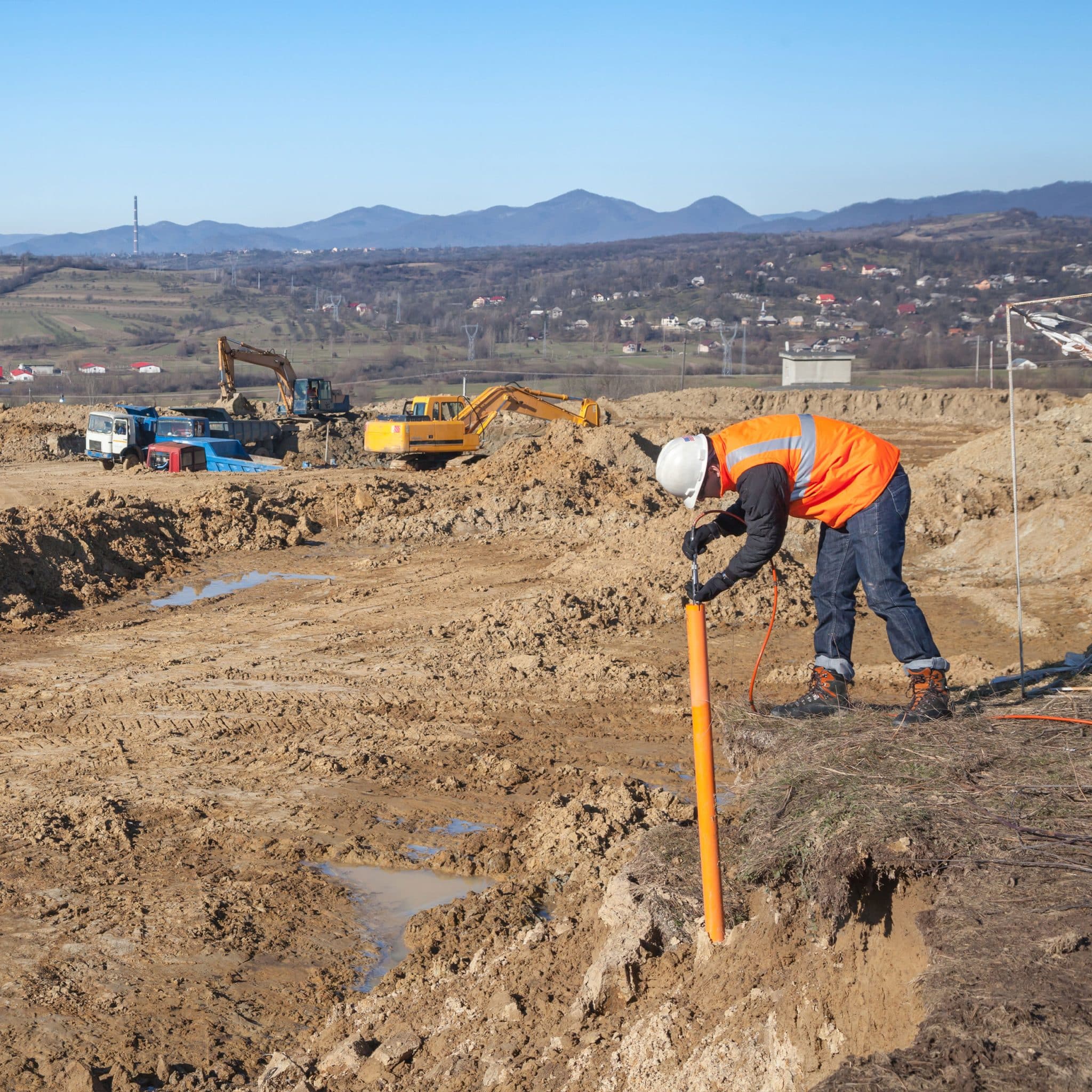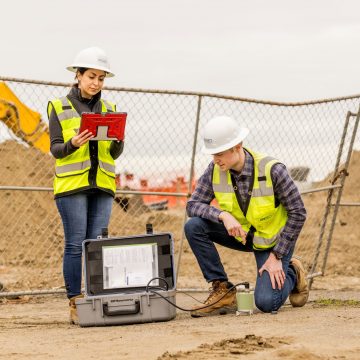Geo Tech Engineer: Enhancing Site Analyses with Advanced Geotechnical Techniques
Geo Tech Engineer: Enhancing Site Analyses with Advanced Geotechnical Techniques
Blog Article
Exploring the Innovative Strategies and Technologies Shaping the Future of the Geotechnical Market for Sustainable Engineering Solutions
The geotechnical industry is going through a transformative shift, driven by cutting-edge strategies and modern technologies that stress sustainable engineering options. Advanced dirt stablizing techniques, the use of clever materials, and the application of data analytics are redefining exactly how we come close to framework obstacles.
Advanced Soil Stabilization Methods
Dirt stabilization is an important process in geotechnical design, intended at enhancing the physical properties of soil to improve its load-bearing capacity and toughness. Advanced soil stabilization methods play an essential role in dealing with difficulties linked with weak or unpredictable dirts, therefore enabling secure and efficient construction methods.
Amongst the famous techniques, chemical stabilization involves the use of additives such as lime, cement, or fly ash, which react with dirt particles to create an extra natural mass. This method is specifically reliable in enhancing the toughness and dampness resistance of large clay soils. Mechanical stablizing, on the various other hand, entails the physical modification of dirt residential properties through compaction or the incorporation of granular products, resulting in boosted density and stability.
An additional innovative method is the usage of geosynthetics, which provide reinforcement and lower dirt erosion while improving water drainage. Strategies like soil mixing and deep soil stablizing are likewise obtaining traction, permitting for in-situ therapy of bothersome soils. Jointly, these advanced techniques not only boost the performance of dirt frameworks however also add to sustainable engineering methods by lessening the need for substantial excavation and material transportation.
Smart Materials in Geotechnics
Advancement goes to the forefront of geotechnical engineering, particularly with the incorporation of wise materials that enhance the performance and capability of dirt frameworks. Smart products, such as form memory alloys, piezoelectric products, and self-healing polymers, are transforming the way designers come close to soil stablizing and infrastructure longevity (geotechnical engineers). These products can adjust to changing environmental conditions, react to anxiety, and also repair themselves, substantially enhancing the strength of geotechnical systems
For example, piezoelectric products can generate electric charges in feedback to mechanical tension, supplying potential for real-time surveillance of soil conditions and architectural integrity. Self-healing products can autonomously repair damages and cracks, reducing maintenance prices and expanding the life-span of geotechnical assets. The combination of these smart products not only enhances the mechanical residential or commercial properties of dirt however also adds to lasting design practices by reducing resource intake and ecological effect.
As the geotechnical industry remains to develop, the adoption of smart products will play an important function in creating cutting-edge solutions, making sure that facilities are not only durable however likewise versatile to future obstacles. This transformative method is poised to redefine the standards of safety and efficiency in geotechnical engineering.
Information Analytics for Infrastructure
The integration of wise products in geotechnical design has led the way for innovative methods, specifically in the realm of data analytics for facilities. This innovative strategy leverages extensive information collection and logical techniques to boost decision-making processes throughout the infrastructure lifecycle. By making use of sensing units installed in clever products, engineers can constantly keep an eye on important parameters such as soil security, dampness degrees, and structural integrity.
Information analytics allows the improvement of raw information right into actionable understandings, enabling for predictive upkeep and enhanced risk management. Advanced formulas and device understanding techniques promote the identification of anomalies and patterns, which can optimize and educate timely treatments resource appropriation. In addition, incorporating geographical information systems (GIS) enhances spatial analysis, more enriching the decision-making structure.
By taking advantage of the power of data analytics, the geotechnical industry is placed to not just boost current methods but also leader innovative options for future facilities challenges. This harmony of technology and engineering principles will certainly define the future of lasting infrastructure advancement.

Lasting Ground Improvement Methods
Different sustainable ground improvement techniques are becoming vital remedies to attend to the challenges of geotechnical design while reducing ecological impact. These methods not just enhance dirt efficiency however also promote environmental stewardship by lowering reliance on traditional, much more intrusive methods.

One more ingenious approach is the application of geosynthetics, that includes naturally degradable products that strengthen geo tech engineer soil while advertising drain and erosion control - engineer of record. This lowers the need for hefty machinery and decreases website disruption, thus maintaining regional environments
Furthermore, methods such as dynamic compaction and vibro-replacement have actually progressed to include lasting practices, minimizing and integrating recycled materials carbon impacts. These techniques exhibit the sector's shift in the direction of more environmentally responsible remedies, guaranteeing that ground renovation not just satisfies design requirements but likewise contributes positively to the surrounding atmosphere.
Advancements in Environmental Monitoring
Recently, developments in ecological surveillance have actually considerably boosted the capability to evaluate and handle geotechnical projects with minimal eco-friendly disruption. Ingenious technologies, such as remote sensing, Web of Points (IoT) gadgets, and real-time information analytics, are changing exactly how ecological impacts are measured and minimized.
Remote noticing modern technologies, consisting of satellite images and air-borne LiDAR, assist in the rapid assessment of land use modifications and ecological problems - geotechnical engineers. These tools enable for continual surveillance of websites, enabling designers to identify potential issues before they intensify. In addition, IoT devices, outfitted with sensors for specifications like soil gas, wetness, and temperature exhausts, give live information streams that boost the understanding of site-specific environmental variables
Real-time data analytics additionally refine decision-making procedures by integrating information from various resources, enabling positive monitoring techniques. This holistic method not only ensures conformity with environmental laws however also promotes sustainable techniques within the geotechnical market.
As these developments continue to advance, they hold the prospective to connect the gap in between design objectives and environmental stewardship, fostering a much more sustainable future for geotechnical jobs worldwide.
Final Thought
To conclude, the geotechnical market is going through a transformative development driven by ingenious strategies and modern technologies that prioritize sustainability. Advanced soil stabilization approaches, the combination of wise products, and the application of data analytics jointly enhance the durability and efficiency of framework. Lasting ground improvement techniques and advancements in ecological surveillance emphasize the market's commitment to ecological stewardship. These advancements not only address contemporary engineering difficulties however likewise lead the way for an extra lasting future in geotechnical techniques.
Methods like soil mixing and deep dirt stablizing are also getting grip, enabling for in-situ therapy of troublesome dirts. Jointly, these innovative techniques not just improve the efficiency of dirt structures yet likewise contribute to sustainable engineering methods by lessening the requirement for comprehensive excavation and product transportation.

Report this page